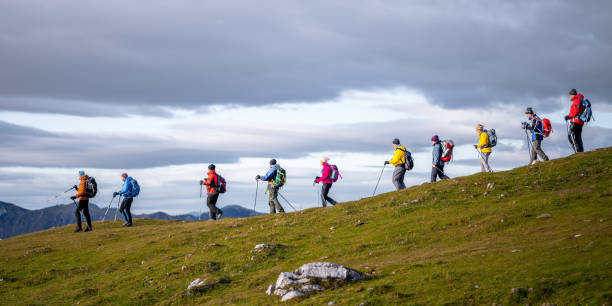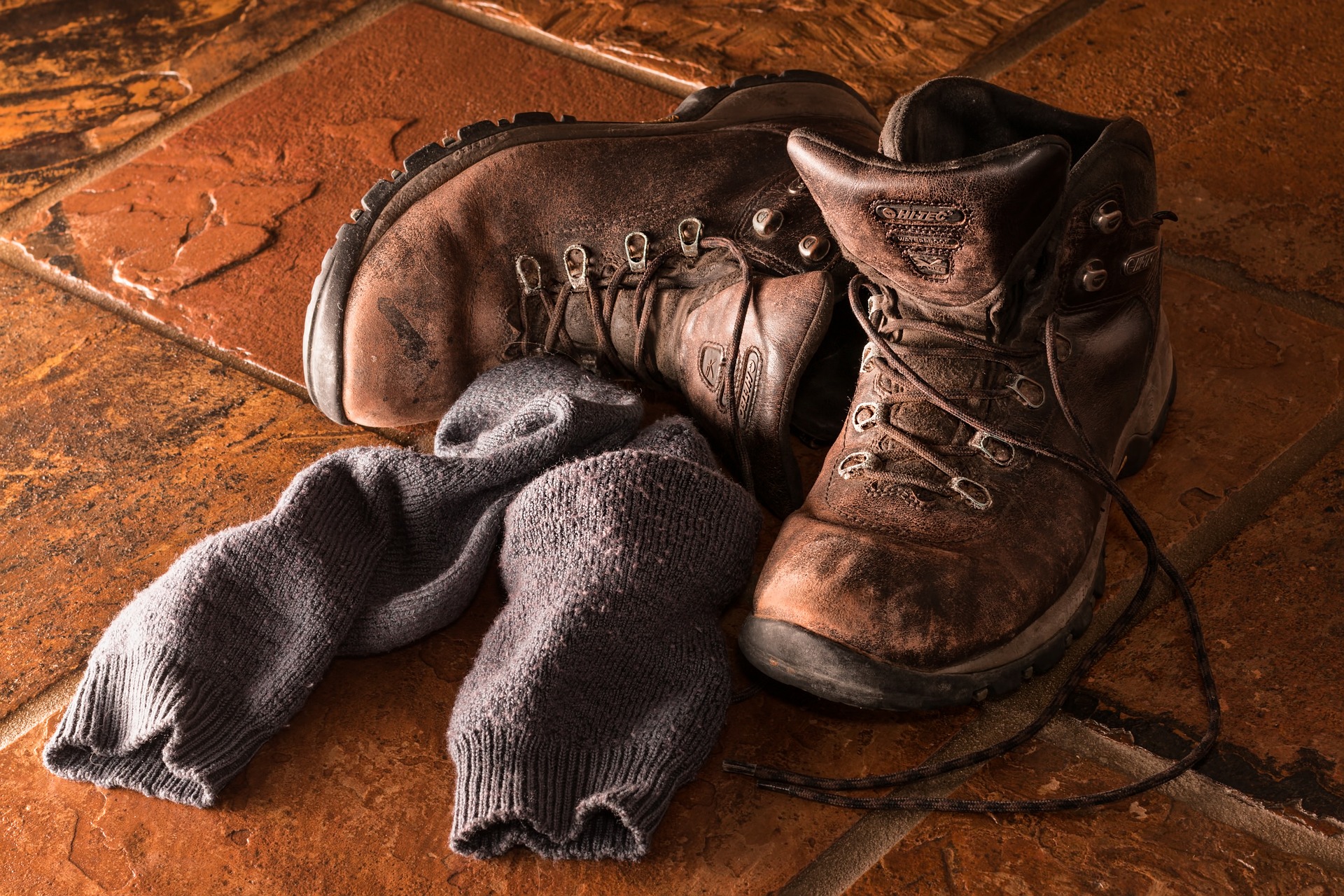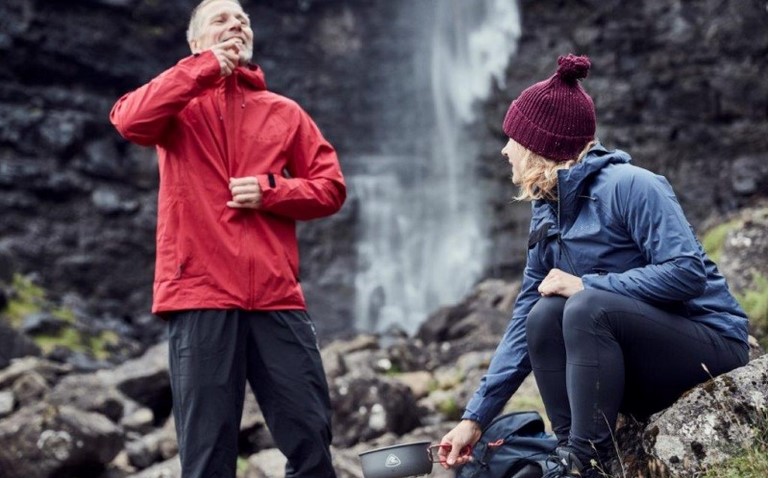
How to buy – The best walking trousers
April 27, 2023
How to buy – The best Walking Socks
May 10, 2023How to buy - The best Waterproof Jacket
So you enjoy the outdoors. Thinking about buying your first waterproof jacket, or updating your current kit? Here we look at what to look for when buying a waterproof jacket, to meet your specific needs.

Buying waterproof jackets
There are many different styles and fits of jackets, and which one is best for you will come down to several criteria and features. This includes the type of walking you will be doing, what time of year, and conditions, you will be exposed to.
Waterproof jackets repel water in different ways, depending on the design of the fabric. There will be plenty of waterproofing jargon on labels when you’re out shopping. With the advancements in technology, it’s now rare for any waterproof fabrics to let in water. It’s the actual design of the jacket that makes the difference when you’re caught in the rain. You will also need to consider the wicking ability of the jacket.
A badly designed and fitting jacket, or one that’s poorly made, can allow water to seep in. In contrast, features that allow air to enter the jacket, such as vents and adjustable cuffs, can improve its breathability and comfort.
It’s best to try on a jacket before you buy to ensure the best fit. If you walk with a rucksack, then take it to the shop to see if it gets in the way of any toggles, pockets, or zips.
Overall you need to be comfortable with your purchase, this could also include the colour.
Waterproof jacket features explained…
Below we look at the key considerations, achieving the right blend of these criteria will give you the best jacket for the walking you are looking at undertaking
When trying on a jacket, look for the following features:
Material
Due to advances in material technology, it is usual for jackets to display a good level of waterproofing. You will also need to consider the durability of the material. The types of zips can also have a factor with water ingress. In addition, you may need to consider the wind-blocking characteristics.
Seams
The seams of traditional waterproof jackets are sealed or taped to prevent water from getting in through the holes created during the manufacturing process. Only when the seams are sealed can the jacket be officially classified as waterproof.
Storm flaps
A jacket’s storm flap is a piece of fabric that covers the jacket’s zips and helps to prevent water from entering the coat via pockets or other zip openings. This is most relevant for the main jacket zip.
Adjustable hem
Having an adjustable hem and waistline lets you use the waterproof jacket’s toggles to tighten the coat to improve fit and aid insulation. Feel where the toggles will rest against your body as they could dig in and prove uncomfortable during a long walk. Some have a single-side toggle, whereas others may have a dual toggle system.
Drop tail
The drop tail of a waterproof jacket is where the back of the jacket is longer than the front. This feature gives you more coverage when bending forwards. When wearing a backpack, some materials can creep up your body; more rigid materials can slow this creep down.
Hood
A well-fitted hood should protect your face from the elements without restricting your view. A stiffened peak will help prevent the hood from bending in the wind. You should be able to adjust the hood easily, even when wearing gloves.
The collar of the jacket can also affect water ingress. Make sure the collar fit can be adjusted for your needs.
Fixed hoods will prevent water from running down your neck and back, as will detachable hoods with a good overlap between the hood and collar, make sure the zip and overlap will prevent water ingress. Some oversized hoods are designed for wearing with a climbing helmet and hats; ensure you can adjust the hood for your individual needs.
Pit zips
Some waterproof jackets have zips under the armpits. These pit zips are designed to aid ventilation and are more suitable for cold, dry conditions.
Wearing a rucksack can make accessing your jacket’s pit zips trickier and could also distort the shape of the zip, increasing the chances of water entering, so take your rucksack along to the shop to try it on with the jacket.
Pockets
Your waterproof jacket’s pockets need to be easily accessible. Pocket positions vary by manufacturer. Try the jacket on with a rucksack so you know what effect any backpack pull will have on their positioning. Take along a pair of gloves so you can see how easy it is to open the pockets while wearing them.
Velcro cuffs
Velcro cuffs can help to keep out water and allow for ventilation in dryer conditions. Fabric adjustable cuffs are less likely to catch when accessing pockets, compared with stiffer cuff tabs. Again take your gloves with you to see how they work with the Velcro cuffs.
Taking care of my waterproof jacket.
The high price of some waterproof jackets makes them well worth taking care of. Here are some tips for prolonging the life of your jacket:
- Always fold your jacket – Stuffing a jacket into a backpack can damage the material over time.
- Keep your jacket clean. Dirt can adversely affect the water characteristics of the jacket.
- Coated and membrane jackets may lose their water characteristics over time. Always follow the manufacturer’s washing instructions. Temperature and cleaning products can have a detrimental effect on the performance of the jacket. There are products on the market which are specifically designed to extend jacket life.
Environment and Sustainability:
Within the industry/sector, there is a big drive to promote Environment and Sustainability factors. This can cover the company’s overall strategy, as well in some instances; go down to the individual product.
I would always recommend taking these into your final decision.
Other How to equipment guides can be found below:
Plan Watch Walk – Expert Reviews.
How to buy – The best Walking Trousers
Some great walks for you to explore:
Historic Market Town of Morpeth, Surrounding Countryside & River Walking.
Easy |
|
0 miles |
|
0 |
|
0 |
|
| Start Point | |
